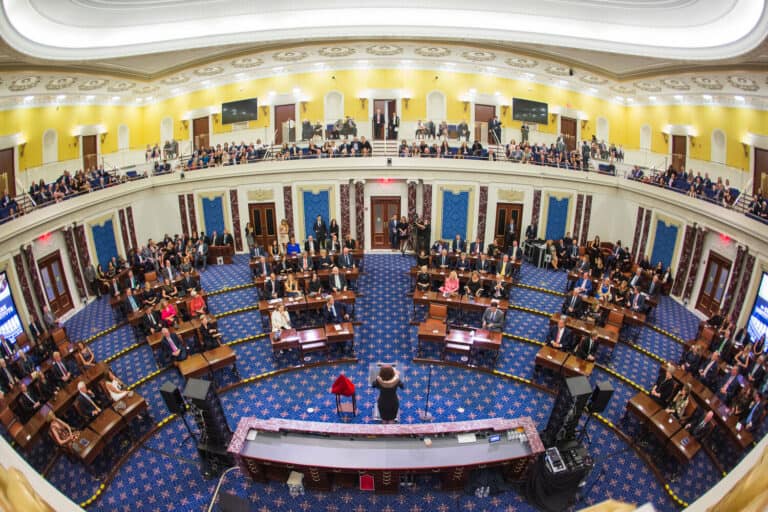The NLRB’s power to remedy violations of §8 of the NLRA is usually quite limited: it can issue cease and desist letters, order the parties to bargain in good faith, and require reinstatement and backpay for individual employees (along with several less common remedies). The Board’s authority derives from §10 of the NLRA, which the Supreme Court has interpreted as being entirely remedial; under the Court’s caselaw, the Board is not empowered to issue punitive remedies. Some have criticized this remedial scheme as overly circumscribed, allowing for little flexibility to deter willful or repeat violations of the Act. In Fallbrook Hospital Corporation v. NLRB, the DC Circuit recently opened the door for unions to recover the costs incurred while dealing with an employer that has negotiated in bad faith—at least if the violations were repeated and egregious. A discussion of the case and its meaning for labor-management negotiations follows.
The Case
The NLRB found that Fallbrook Hospital had failed to negotiate in good faith with the California Nurses Association, the union certified to represent a bargaining unit of registered nurses working in the Hospital’s acute care unit. As the DC Circuit wrote, “The ALJ found that Fallbrook had engaged in a slew of unfair labor practices, including ‘failing and refusing to bargain with the Union in good faith over the terms of a collective-bargaining agreement, failing and refusing to bargain with the Union over the terminations of unit employees…and failing to furnish relevant information to the Union…. For example, the Respondent’s bargaining team failed to provide any proposals or counterproposals during the first eight bargaining sessions until it received a full set of proposals from the Union, left the September 12 bargaining session abruptly and without explanation, and left the October 11 bargaining session 3 minutes after arriving.” The Hospital did not contest these findings, conceding its violations of § 8(a)(1) and (5).
In fact, the only issue on appeal was the Board’s remedy: it ordered the Hospital to reimburse the union for the expenses it incurred during the collective bargaining sessions the Board determined to be in bad faith. It explained: “We find that the Respondent’s misconduct infected the core of the bargaining process to such an extent that its effects cannot be eliminated by the mere application of our traditional remedy of an affirmative bargaining order. In these circumstances, requiring the Respondent to reimburse the Union’s negotiation expenses is also warranted both to make the [Union] whole for the resources that were wasted because of the [Respondent’s] unlawful conduct, and to restore the economic strength that is necessary to ensure a return to the status quo ante at the bargaining table. Such expenses may include, for example, reasonable salaries, travel expenses, and per diems.” The Board relied on an earlier case that authorized it to award negotiating expenses in cases of “unusually aggravated misconduct,” which it would analyze on a case-by-case basis.
The DC Circuit affirmed the Board’s order, deferring to the Board’s judgment under an “abuse of discretion” standard. In doing so, it rejected three of the Hospital’s arguments. First, the Hospital argued it was singled out solely based on the specific examples of bad faith negotiating mentioned above. On this issue, the court found that the Board had done a thorough analysis and concluded that “the totality of the conduct indicates [Fallbrook] operated with a closed mind and put up a series of roadblocks designed to thwart and delay bargaining”—in other words, not just the three specific instances described above. Second, the Hospital pointed out that it had reached a pre-certification agreement with the Union, ostensibly showing that it had negotiated in good faith at one point. The court disagreed: it found that the fact that a party can show evidence of agreement with the other side on some issues does not negate its overall pattern of conduct.
Third, the Hospital filed a motion to remand under § 10(e). Shortly after the NLRB decided the case, the Hospital shut down nearly all services at the acute care unit and terminated all of the workers that had been part of the union. The Hospital believed that these “changed factual circumstances” were enough for the Board to reconsider its award of negotiation expenses. Under this theory, there were two purposes to the Board’s award: “one to redress the effect of Fallbrook’s past misconduct on the Union (which Fallbrook does not contest), and one to provide the Union prospective strength at the bargaining table (which Fallbrook claims is now “unnecessary” due to the closure of the Hospital’s acute care unit).” Yet in the court’s words: “this argument is not only meritless, it reflects real chutzpah.” It concluded that the Board’s stated purpose was “to reimburse the Union for resources wasted by attempting in vain to bargain with Fallbrook, and to restore the status quo ante – i.e., to place the Union in the same position it was in before the parties began bargaining.” This was entirely different from the future bargaining strength that the Hospital believed the court was endorsing vis-à-vis the union. Instead, the point was to make the union whole for the injuries it suffered prior to the dissolution of the bargaining unit.
Its Implications
The DC Circuit has clearly affirmed the Board’s right to award negotiating costs (defined liberally) in cases less egregious than had previously been described in caselaw. Yet the holding seems limited in that the court went out of its way to quote the Board’s findings that the Hospital had acted in an “obstinate and pugnacious manner,” that it had no intention to bargain in good faith, and that its record of misconduct was “quite extensive.” On one hand this strong language seems to cabin the negotiating fees remedy to extreme situations, as in this case; on the other hand, the court repeatedly affirmed the Board’s discretion to make that decision on a case-by-case basis, declining to set a concrete standard.
For now the Board has a clear path to employ this remedy, a fact that may limit employers’ conduct during bargaining sessions. Yet in the absence of any specific definition of what constitutes good faith negotiating—one of labor law’s persistent quandaries—it is unclear how “obstinate” an employer can be without a court imposing this penalty. The two issues are bound together: clarity on one will help give shape to the other. It is also unclear how liberally the Board can employ this rarely used remedy before a court steps in to explicitly limit its availability. Much likely hinges on how frequently the Board makes use of this new remedy it can now order.






Daily News & Commentary
Start your day with our roundup of the latest labor developments. See all
November 2
In today’s news and commentary, states tackle “stay-or-pay” contracts, a new preliminary injunction bars additional shutdown layoffs, and two federal judges order the Trump administration to fund SNAP. Earlier this year, NLRB acting general counsel William Cowen rescinded a 2024 NLRB memo targeting “stay-or-pay” contracts. Former General Counsel Jennifer Abruzzo had declared that these kinds […]
October 31
DHS ends work permit renewal grace period; Starbucks strike authorization vote; captive-audience ban case appeal
October 30
Sweden’s Tesla strike enters its third year; Seattle rideshare drivers protest Waymo’s expansion in the city.
October 29
9th Circuit rejects challenge to NLRB's constitutional structure; preemption challenges to state labor peace statutes
October 28
Two federal unions oppose CBA cancellations, another federal union urges Democrats to end the government shut down, and Paramount plans for mass layoffs
October 27
GM and Rivian announce layoffs; Boeing workers reject contract offer.